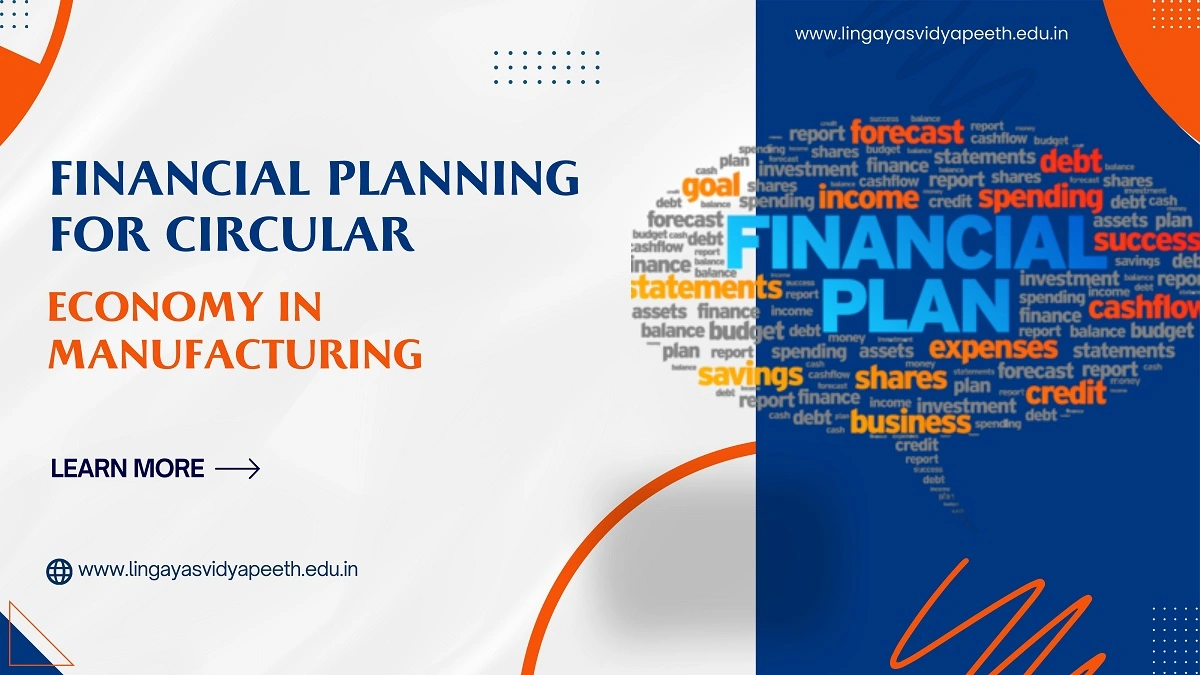Home » Financial Planning for Circular Economy in Manufacturing

The manufacturing industry stands at a transformative crossroads where traditional linear production models are giving way to circular economy approaches. As global resource constraints intensify and environmental regulations tighten, manufacturers worldwide are recognizing that circular economy adoption is not just an environmental imperative but a strategic financial opportunity worth trillions of dollars. This shift toward sustainable manufacturing and closed-loop manufacturing improves resilience and creates new revenue streams.
Financial planning for circular economy transformation requires a clear understanding of investment frameworks, risk assessment methods, and return optimization strategies. This comprehensive approach needs careful evaluation of upfront capital requirements, operational restructuring costs, and long-term value creation potential across the manufacturing value chain and circular supply chain.
A circular economy is like nature’s recycling system but for businesses. Instead of the traditional “take-make-dispose” model, companies follow a “reduce-reuse-recycle” approach across the product lifecycle. Think of it as turning waste into value through material recovery, eco-design, and product lifecycle management (PLM).
Imagine a smartphone maker that collects old phones, extracts valuable metals, and uses them to make new phones. That’s circular economy in action — keeping materials in use for as long as possible through repair, refurbishment, and recycling.
According to a 2023 report by the Ellen MacArthur Foundation, circular economy practices could generate $4.5 trillion in economic benefits globally by 2030.
Manufacturing is the perfect place for circular economy models because factories produce both products and waste. Here’s why manufacturers are adopting circular manufacturing and a circular supply chain:
Example: Interface Inc., a carpet maker, collects old carpets, recycles fibres, and creates new products — saving about $500 million annually through circular operations.
Switching to a circular model is a financial transformation, not just an environmental choice. Main challenges include:
Manufacturers should follow a structured approach to plan circular investments. Below is a step-by-step financial planning framework for circular economy projects.
Start by analysing current finances and set realistic circular goals. Tasks include:
Not all projects are equal. Prioritize by:
Explore diverse funding sources:
Manufacturers use financial models to evaluate circular projects. Typical categories:
Costs
Benefits
A 2024 Accenture study found manufacturers adopting circular practices often see an average ROI of 15–25% within five years.
Modern financing tailored to circular economy includes:
A typical roadmap and budget split for circular adoption:
Year 1 — Foundation Building (≈40% of total investment)
Year 2–3 — Scale and Optimize (≈50% of total investment)
Year 4–5 — Expansion and Integration (≈10% of total investment)
Technology enables circular operations. Common investments and expected outcomes:
Common risks and mitigations:
The circular economy creates new finance roles:
Financial planning for circular economy adoption in manufacturing is both smart business and responsible stewardship. Companies that plan carefully — using green financing, strong cost-benefit analysis, and technology pilots — often find sustainability and profit go hand in hand. As regulation tightens and consumers demand greener products, circular adoption will shift from optional to essential. The firms that start planning today will lead tomorrow’s sustainable economy.
Also Read
Business courses after 12th
Best course after 12 commerce
Graduation courses after 12th
Entrepreneurship courses after 12th
From
Miss. Vaishali Kamboj
Assisnt Professor
School of Commerce and Management
RECENT POSTS
CATEGORIES
TAGS
Agriculture Agriculture future AI Architecture artificial intelligence Bachelor of Commerce BA English BA Psychology BTech AIML BTech CSE BTech cybersecurity BTech Engineering Business management career Career-Specific Education career guide career option career scope Civil engineering commerce and management Computer Science Computer science engineering Data science degree education Engineering Engineering students English Literature english program Fashion Design Fashion design course Higher Education Journalism journalism and mass communication law Law career Machine Learning mathematics MBA MBA specialization Mechanical Engineering Pharmacy Psychology Research and Development students
Nachauli, Jasana Road, Faridabad, Haryana
Address: C-72, Second Floor, Shivalik, Near Malviya Nagar,
Above HDFC Bank, New Delhi 110017
Landline No. - 011-46570515 / 45138169 / 41755703
Mobile No. - +91-7303152412 / +91-7303152420 / +91-9311321952
Toll Free: 1800-120-4613
Mobile : 8447744303 | 8447744304 | 8447744306 | 8447744309
8700003974 | 8700003411 | 8700003749
Copyrights © 1998 - 2025 Lingaya's Vidyapeeth (Deemed To Be University). All rights reserved.
LV only conducts physical/online verification of any document related to examination on the following email id:
It is important to note that the following email IDs and domains are fraudulent and do not belong to our university.